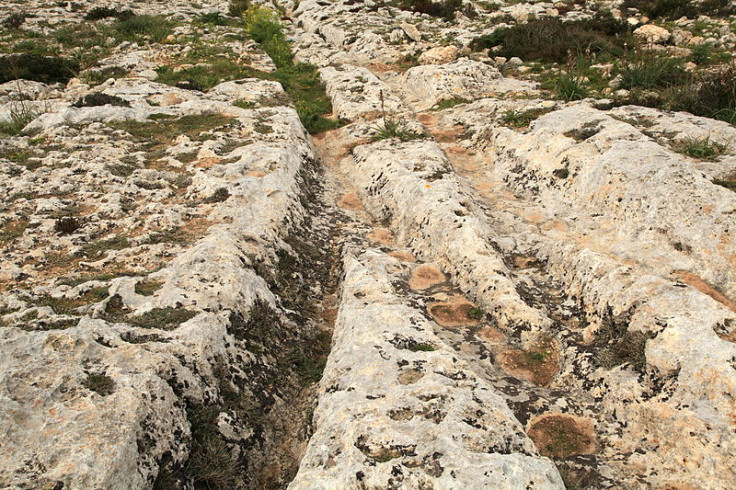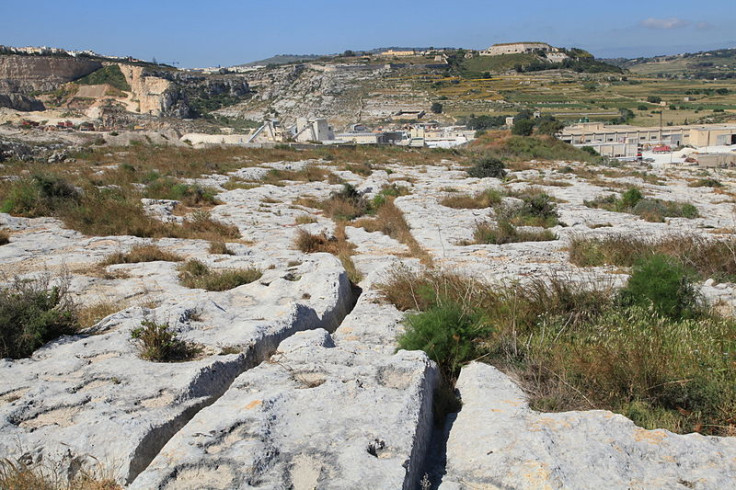Ancient alien civilisation didn't drive giant all-terrain cars across Turkey's Phrygia Valley

An alien civilisation did not drive huge all-terrain vehicles across Turkey's Phrygia Valley 14 million years ago – the tracks were probably made by humans for agricultural purposes closer to 5,000 years ago, say experts. The "mystery groves" found Phrygia have been observed in multiple locations, with the island of Malta having many, many examples, Claudia Sagona, an expert in the archaeology of Turkey and Malta at the University of Melbourne told IBTimes UK.
The issue of the Phrygia Valley's groove-like markings was raised by Russian geologist Dr Alexander Koltypin, who claimed that aliens made the markings 12-14 million years ago with "ancient vehicles on wheels" and their weight made the deep ruts. According to Koltypin, the footprints of dinosaurs were preserved in the same way: All these rocky fields were covered with the ruts left some millions of years ago ...we are not talking about human beings," he said.
"As a geologist, I can certainly tell you that unknown antediluvian all-terrain vehicles drove around Central Turkey some 12-14 million years ago," Koltypin said. "I think we are seeing the signs of the civilisation which existed before the classic creation of this world. Maybe the creatures of that pre-civilisation were not like modern human beings. "

While his claims made headlines, the reality is probably far less exotic but still fascinating. One theory of these "cart ruts" is that they are vehicle tracks – "human technology, not alien", Sagona noted – but other factors point towards an ancient method of field construction, ploughing and the channelling of water. The furrows would have been dug into the bedrock of arid regions in order to retain soil and water.
While precise dating is difficult, these features were probably created by early agricultural communities. Indeed, in a paper about similar furrows found in Malta, Sagona proposes they are from the Temple Period (approximately 3600-700 BC). In the study published in the Oxford Journal of Archaeology in 2004, she wrote how the cart ruts were constructed to "push the boundaries of available arable land and are better identified as field furrows".
"In a nutshell: They appear in degraded rocky areas; aspects of land reclamation and intense land use are locked into the landscape here (perhaps we could learn something here in regard to global warming)," she said. "The furrow is the drainage line and the area in between is the garden or crop bed. They often appear in regular clusters of parallel lines. Just like modern fields, crops in antiquity were grown in regular beds with drainage channels in between."

The regular distance between the furrows probably reflected the manageable distance for people working on them – possibly related to the length of farm tools and the reach of the farmers. "Long stretches of single or parallel lines appear to have more to do with water management and these often have a shallow gradient, which I think is to channel the water at a constant, but gentle flow to field areas."
She added: "In areas that were degraded and were reclaimed as fields, soil and organic matter was imported and built up. This kind of activity is documented in the Aran Islands and in historic accounts of soil manufacture in Malta.
"This common-sense explanation will probably not stop those who want to believe aliens invaded, but I think the really amazing aspect is how resourceful and savvy ancient farmers were. They knew their land, they understood how water could be managed and they developed strategies to improve food production."
© Copyright IBTimes 2025. All rights reserved.





















